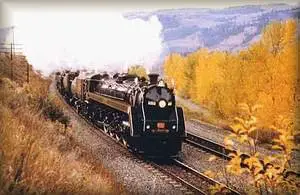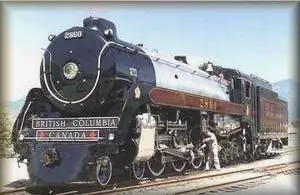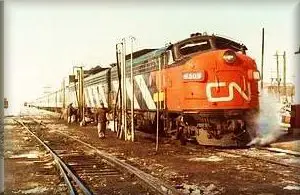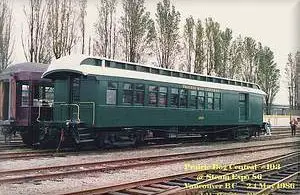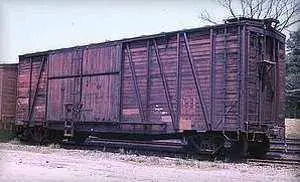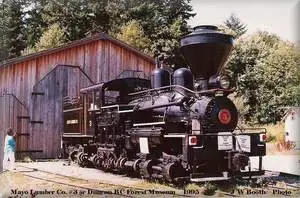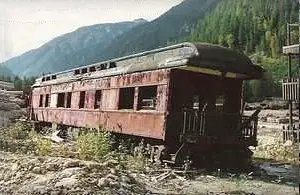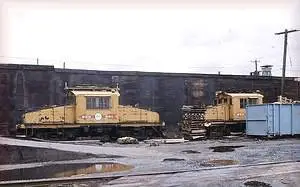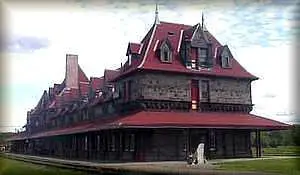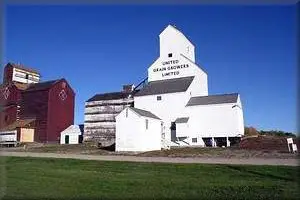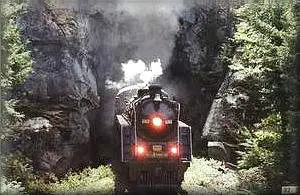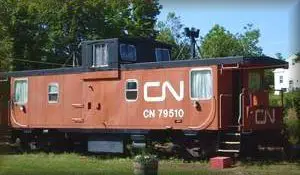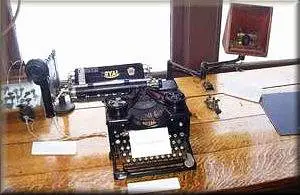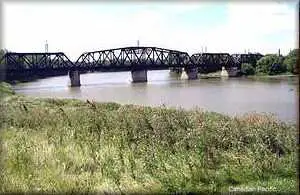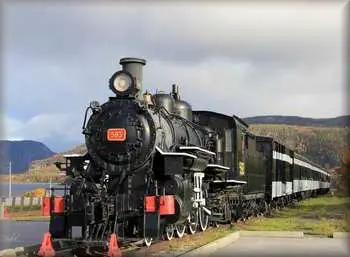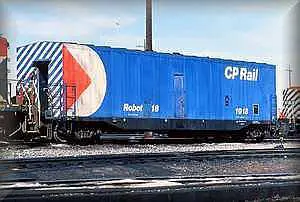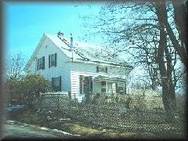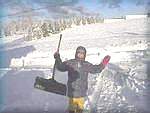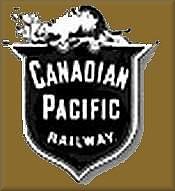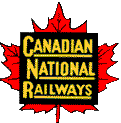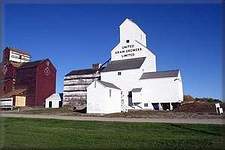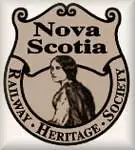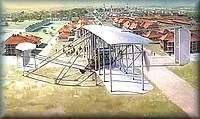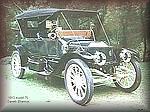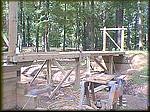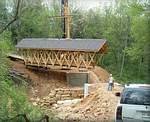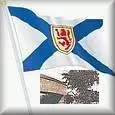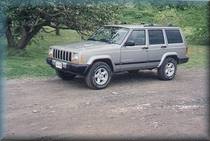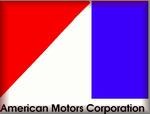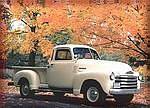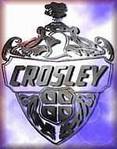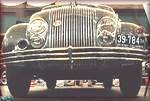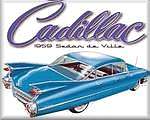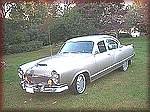
|
Railway hand car |
| Complements of the BC Archives |
|

|
Railway 3 Wheel Handcar (Velocipede)
This picture was taken Tim Croft's father in lawSydney Taylor in
1942 when he was on his way to Raf Penhold
(Red Deer AB) flight training school. |
| This picture was submitted by Tim Croft from the UK |
|

|
Gas driven inspection car (1923) |
This picture was taken at the Halifax
& Southwestern Railway Museum,
Lunenburg Nova Scotia |
|

|
Hand Car with two Interuurban Electric's at Delson Que.
Aug 1976 |
| This picture was taken by Allan Campbell and submitted by Jim Parker |
|

|
A CN Section gang on standby CFB Shilo Man, 1970 |
| This picture was taken and submitted by Jim Booth, Willingdon AB |
|

|
CPR crew members on a jigger car, riding the rails
regardless of the weather |
| This picture was submitted by Art Grieve, Winnipeg,
Manitoba |
|

|
CPR Maintenance crew, 1948 |
| This pictures was submitter by Jim Sheppard, Fort Frances,
ON Canada |
|
on_his_speeder.jpg)
|
Calgary July 2012, a hardhat foreman is heading back
to Alyth Yard on his speeder, after a day’s work. |
| This picture was taken and submitted by Massey F. Jones |
|

|
It's not very often that we'll see an Austin Mini used as a railway
speeder.
The roof rack has some kind of rod on the driver's side
and a long-handled shovel on the passenger's side,
shown in the other photo.
This one was in or around Cochrane, Ontario in April 1976 and belonged
to CN. |
| This picture was taken and submitted by Massey F. Jones |
|

|
The passenger side of the CN speeder above; Northern Ontario, April
1976.
For some reason, it doesn't bear a number.
Notice the long-handled shovel fastened to the roof rack.
If someone has other details, we'd like to add them here. |
| This picture was taken and submitted by Massey F. Jones |
|

|
1934 Pontiac Rail Inspection Car |
This picture was taken and submitted by Jan Barnier, Netherlands
It was taken at the Railroad Museum in Odense, Denmark |
|

|
Canadian Pacific Railways M-499, on display at the Western
Development Museum, 50 Diefenbaker
Drive, Moose Jaw, SK
It is a 1934 Buick adapted to run on rails. The
conversion was done in 1936 at the Canadian
Pacific Railway shop in Winnipeg for use by the
CPR superintendent, Saskatchewan division,
who worked out of Moose Jaw. |
| This picture was taken and submitted by Massey F. Jones |
|

|
Canadian Pacific Railways 1934 Buick Rail Inspection Sedan,
M-499 stands in front of the replica station within
the railway display at the Western Development
Museum, in Moose Jaw, SK.
Some of the display includes MLW diesel locomotive
CPR 6553 , CPR steam locomotive 2634 shown in these pages and other
rail artifacts such as railway cars. Other portions of the museum feature
old-time classic cars and aircraft, particularly the Canadian Forces Snowbirds
who are base in Moose Jaw.
Take a 360 degree tour of some of the displays at: http://wdm.ca/mj.html |
| This picture was taken and submitted by Massey F. Jones |
|
mar3.jpg)
|
Inspection Car 507, at the Algoma Central Railway
Steelton Shops in Sault Ste. Marie ON, mid-1970s,
The 507 is a 1967-1968 AMC Ambassador Station Wagon.
It has been fitted with steel wheels, which precludes travelling
on the highway. Another special feature of the
car is the jack and turntable fitted to the underside. To change
direction, the driver lowered the jack against the roadbed and raised the
car slightly off the rail. By then pushing on one corner of the car, it
could be turned
around easily.
Next to the 507 is ACR Steam Generator 76, rebuilt
from a boxcar 204 in 1951 or 1952, to provide heating
for ACR coaches on mainline trains. Behind the vehicle
is ACR 141, one of the diesels purchased ACR from
General Motors in 1951 strictly for yard switching.
It was retired in 1992. During service the ACR SW8s
had their stack shortened and were fitted with a spark arrestor.
There is a photo of their only other SW8,
ACR 140 at
http://yourrailwaypictures.com/OldDiesels/indexOther.html |
| Massey F. Jones collection |
|

|
BC Rail V-10 track inspection car at an unknown
location, either North Vancouver or Squamish.
It was probably built in the 1970s by The D. Wickham Company of Ware,
England. This is their Type 42.
View their brochure for this model at https://www.flickr.com/photos/112499646@N07/
11557350336/.
V-10 is 1 of only 5 ever imported to
Canada. Another one is M200 used by CP Rail;
shown down the page at http://www.wpgrailwaymuseum.com/page2.html
and preserved in Winnipeg.
Both featured a streamlined body with full insulation
and could sit as many as 9, with double-ended controls
and capable of a fair speed.
Sometime in the mid-1980s, the V-10 got repainted in
the new BCol livery of red white and blue and it is now preserved
at the Prince George Railway and Forestry Museum. See a photo of the V-10
in blue at http://www.panoramio.com/photo/38387499 |
| Massey F. Jones collection |
|

|
One of the most forgotten yet oldest pieces of railway equipment
has to be the track speeder, replacing the
handcar
http://en.wikipedia.org/wiki/Handcar, mostly in
use since the beginning of railroading.
About 1991, most track speeders were replaced by
half-ton pickup trucks for track inspection.
CN speeder 800-30 in primer paint was photographed in Calgary's
Sarcee Yard around that time.
The speeders are now very much in great demand by
railway collectors and museums
Take the ultimate speeder trip by visiting The
Railrodder, starting Buster Keaton, as he makes a
trip on CN speeder 135-58 across Canada.
http://www.youtube.com/watch?v=EiqqxyZeDXo |
| This picture was taken and submitted by Massey F. Jones |
|

|
This is more or less the original National Film Board
version, completely uncut and entertaining to boot.
It shows several views of bygone stations (such as
downtown Ottawa), old railcars and diesel engines
Fifteen thousand viewers liked the video.
Should you wish to purchase the original: http://www.nfb.ca/film/railrodder
34,000 people liked that one.
More about the making of the film at: http://en.wikipedia.org/wiki/The_Railrodder
And more about speeders at: http://en.wikipedia.org/wiki/Speeder |
| This picture was taken and submitted by Massey F. Jones |
|

|
WP & YR speeder at Carcross |
| This picture was taken and submitted by Jim Booth, |
|
.jpg)
|
First, there were handcars (some people called them handcarts) used
by railway maintenance crews. They were usually powered by two people alternately
pushing a T type handlebar up and then down, to make the car move. The
higher end sit down models required just one person,
pushing and pulling a large lever activating the wheels.
Then came motorized versions, powered by a two-cycle engine. Some
people referred to them as "put-putts".
They were hot in simmer and cold in winter. Automobiles
like Buicks, equipped with steel wheels were for the railway superintendents
and always had high priority on the
Right of Way. http://www.borail.org/Ma--Pa-No101.aspx
The more modern version of the track inspection car for track maintenance
is now the small and medium size utility truck fitted with a "high railer"
kit. It's usually a pickup
truck which can transport both material and crews along
the rail. |
| This picture was taken and submitted by Massey F. Jones |
|
.jpg)
|
Trucks such as this small Bronco truck were issued to Maintenance
of Way (MofW) crews at divisional points. Notice the high railer
kit, front and back. The type on this truck can be easily installed
or removed.
As they neared the site to be inspected, the MofW crew proceeded
to a railway crossing. There, the aligned the
truck aligned it parallel to the rails. Steel wheels front
and back were then lowered into the rails, either manually or electrically
from the cab. The truck then departed down the rails and tires provided
the traction on top of the rail and forward movement, while the steel wheels
guided the vehicle along. The setup operation usually took less than 2
minutes.
|
| This picture was taken and submitted by Massey F. Jones |
|
.jpg)
|
CN 079348 is photographed on July 8th, 1978 on the main street in
the Village of Beiseker Alberta, as evidenced by
the large building in the background at the end of the street, which
serves as the village office and museum http://www.beiseker.com/
The building is in fact the old CPR station, illustrated on
the Station page. Notice the wide width of the Main Street
in those early Western Canada villages and towns.
All commerce was usually located there. All parking was at an angle
such as here. (It goes back to the horse and buggy days and hitching posts)
|
| This picture was taken and submitted by Massey F. Jones |
|
.jpg)
|
Westbound CPR M-101 utility vehicle, fitted with
Hi-Railer, downtown Calgary with management
personnel inside.
This view is pre-1991, since Alberta switched to
rear-only plates at that time. |
| This picture was taken and submitted by Massey F. Jones |
|

|
A hi-railer near Weldford NB down the NB Southern's MacAdam sub
at the Hwy 7 crossing, obviously doing
a rail inspection. Jul 2007 |
| This picture was posted as "Public domain" on Photobucket
by Brian Hiscock |
|

|
A CPR maintenance employee actuates a lever to lift the front bogie
of his Hi-Railer off the tracks, at the
11 St SW level crossing in Calgary (Mi 1.1 Laggan Sub);
as the Heavy Haul train, previously parked on a siding
is now ready to proceed west. The lifting operation takes about
2 minutes and is hydraulic.
Note the extra-wide tires on the truck for better
traction of rubber on steel.
The location is ideal for visiting railfans and within
walking distance of the Calgary Tower in the
background. The date is June 17th, 2014. |
| This picture was taken and submitted by Massey F. Jones |
|

|
Windsor & Hantsport Railway Company
(WHRC) Plow 55360R
This winter there was no need to take any chances!
The plow sat here all winter because of lack of snow |
|
|

|
(WHRC) Plow 55360R |
|
|

|
WHRC Plow 55360 CEMR 4014 4011
Windsor Jct Jan 4 2010
Windsor & Hantsport Railway Company (WHRC) plow 55360 (ex CN)
pushed by Central Manitoba Railway GP9RMs 4014 & 4011 (leased to the
WHRC) and three empty grain cars have just arrived at Windsor Junction
on January 4 2010.
Antique equipment still at work! Last year wet snow was apparently
packed down by trespassing snowmobilers and then froze. First the locomotives
derailed and later the plow derailed. Finally the railroad had to rent
a front end loader to
dig out the tracks. This year they are taking no chances!
With the economic downturn the gypsum mine has stopped work and
so the freight from Windsor Junction to Windsor Nova Scotia (approximately
weekly) is the only train on the railway. At Windsor the grain is unloaded
with augers into trucks which transport it to the feed mills in the Annapolis
Valley - the line from Hantsport to
New Minas is out of service. |
| Text and picture used with permission of David Othen. |
|

|
RSR Plow 3012
Roberval Saguenay Raliway plow 3012 in Alma QC in
the early 80s, behind an RSR flanger.
The flanger is still in the old paint of orange and black.
Roberval Saguenay started operation is an arm of Alcan in 1925,
taking over a pulp carrying railway. RS is an industrial shortline,
operating from Port Alfred QC (a
deep sea port) to Jonquière (formerly Arvida - named
for Arthur Vining Davis, first president of ALCOA), carrying bauxite,
which is then refined into alumina and aluminum ingots. Another plant is
in Alma QC.
The Roberval and Saguenay Railway Company is
owned by Rio Tinto Alcan ( previously
Alcan Aluminium)
Near there is the only aluminum (road) bridge in Canada.
http://en.wikipedia.org
View the RS information at http://cnplus.cn.ca/it/shortlines/sl_static.nsf/
and
http://www.trainweb.org/oldtimetrains/RS/history.htm
In the 1980s, prime motive power was Alco/MLW only.
RS operated the first two M420TRs.
Numbers 26 ad 27. - see photos elsewhere on this page. |
| This picture was taken and submitted by Massey F. Jones |
|

|
NAR 16531 Snowplow photographed at Dunvegan Yard,
circa mid 70s |
| Collection: Massey F. Jones |
|

|
CNR Snowplow #55231
This plow is now with BCR |
| This picture was taken and submitted by Massey F. Jones |
|

|
CP Snowplow 400884 displayed on a side track at
Calgary's Heritage Park in October 2013.
The white sign on the side warns visitors against
climbing on the artifact.
The orange scuff marks on the red paint indicate that
many took up the challenge anyway. |
| This picture was taken and submitted by Massey F. Jones |
|

|
CP Snowplow 400884 at Heritage Park in September 2013.
The track in front is the "mainline" circling the park.
View dozens of rail pictures of this noted Calgary landmark on my
page at http://yourrailwaypictures.com/HeritagePark/
The artifact was constructed in December 1911 at the
Canadian Pacific Angus shops in Montreal, as CP 300884,
before becoming 4000884 and probably worked through
the Rockies before being retired and donated to the Park.
Ron Powman, worked for CP for 37 yrs..including a few years on the
Conductor's spareboard out of London Ontario. We often ran snowplows
especially on local branchlines and I worked many. He had the following
comments to make about this plow.
The CP plow you show No. 400884 is a western design used to plow
avalanches at lower speeds. Those plows have shorter "brow" and bars over
windows to prevent trees in the snow from breaking windows. |
| This picture was taken and submitted by Massey F. Jones |
|
.jpg)
|
Snowplow 55499 was built by CN in 1939 and passed to
the Kamloops Heritage Museum in 2002 it is seen here downtown
Kamloops behind the original CN station/Keg Restaurant
(a heritage site) on May 7th, 2009. Behind the plow is what
seems to be the "Riverside Park" passenger coach as
seen in another web picture. The passenger car is ex
CN/VIA 5590.
Both railway artifacts are property of the Kamloops
Heritage Railway Society
http://en.wikipedia.org/wiki/Kamloops_Heritage_Railway
http://tourismkamloops.com/kamloops-heritage-railway
-steam-train-in-kamloops-british-columbia
|
| This picture was taken and submitted by Massey F. Jones |
|

|
CN double-ended snowplows 55698 and 55699 at Charlottetown PEI,
July 1974.
The plows were painted CN orange. The 698 is
preserved at The New Brunswick Railway Museum
in Hillsborough, NB.
View a photo of the preserved plow at: http://www.rrpicturearchives.net/showPicture.
aspx?id=3557367
|
| This picture was taken and submitted by Massey F. Jones |
|

|
CP C424 4238 on snowplow at Schreiber Ontario |
| Photograph by Darcy Furlonger and submitted by Jean Guy Hamel |
|

|
CNR Snow Plow #55614R at London Ont. Aug 1987 |
| This picture was taken and submitted by Jim Booth, Willingdon AB |
|

|
CNR Snow Plow #55205 at Carpeol Ont. Sept 1976 |
| This picture was taken and submitted by Jim Parker |
|

|
CNR Snow Plow #55217 at Carpeol Ont. Sept 1976 |
| This picture was taken and submitted by Jim Parker |
|

|
CNR Snow Plow #55256 |
| This picture was taken and submitted by Jim Parker |
|

|
CNR Snowplow #55614 at the MacMillan Yard,
Concord Ont. |
| This picture was taken and submitted by Jim Parker |
|

|
CNR Snowplow #55614 at the MacMillan Yard,
Concord Ont. |
| This picture was taken and submitted by Jim Parker |
|

|
CNR Snow Plow #554 at North Bat Ont. |
| This picture was taken and submitted by Jim Parker |
|

|
CNR Snow Plow #55397 from the rear at London Ont. 1990 |
| This picture was submitted by Jim Parker and is part of the
"Frank Smeltzer Collection" |
|

|
CNR Snow Plow #55304, 1950's |
| This picture was submitted by Jim Parker and is part of the
Jim Parker Collection |
|

|
CNR Snow Plow #55501
CN snowplow No. 55501 is a double track plow. This is designed to
throw most of the snow to one side instead of evenly to both sides. It
would be run on the right hand track on double main track territory, in
the direction of movement. They have a small wing on the "inside" left
side and a normal wing on the right or "outside". The idea is to avoid
throwing a lot of snow on the adjacent track.
This information was provided by Ron Bowman
Ron worked for CP for 37 yrs..including a few years on
the Conductor's spareboard out of London Ontario.
We often ran snowplows especially on local branchlines and I worked
many. |
| This picture was submitted by Jim Parker and is part of the
Jim Parker Collection |
|

|
CNR Snow Plow #56304, 1950's |
| This picture was submitted by Jim Parker and is part of the
Jim Parker Collection |
|

|
CNR Snow Plow #55219, 1950's |
| This picture was submitted by Jim Parker and is part of the
Jim Parker Collection |
|

|
CNR Snow Plow #55501 |
| This picture was submitted by Jim Parker and is part of the
Jim Parker Collection |
|

|
CNR Snow Plow #55501, 1950s |
| This picture was submitted by Jim Parker and is part of the
Jim Parker Collection |
|

|
CNR Snow Plow #55501, 1950s |
| This picture was submitted by Jim Parker and is part of the
Jim Parker Collection |
|

|
CNR Snow Plow #55501, 1950s |
| This picture was submitted by Jim Parker and is part of the
Jim Parker Collection |
|

|
CNR Snow Plow #55219, 1950s |
| This picture was submitted by Jim Parker and is part of the
Jim Parker Collection |
|

|
CNR Snow Plow #55501, 1950s |
| This picture was submitted by Jim Parker and is part of the
Jim Parker Collection |
|

|
CNR Snow Flanger #56286 1950's |
| This picture was submitted by Jim Parker and is part of the
Jim Parker Collection |
|

|
CNR Snow Flanger #56286 1950's |
| This picture was submitted by Jim Parker and is part of the
Jim Parker Collection |
|

|
CNR Snow Flanger #56286, 1950's |
| This picture was submitted by Jim Parker and is part of the
Jim Parker Collection |
|

|
CNR Snow Flanger #56288, 1950's |
| This picture was taken and submitted by Jim Parker |
|

|
CNR Flanger #56392 at Allandale Ont. 1970 |
| This picture was taken and submitted by Jim Parker |
|

|
CNR Flanger #56392 at Allandale Ont. 1970 |
| This picture was taken and submitted by Jim Parker |
|

|
CNR Flanger #56392 at Allandale Ont. 1970 |
| This picture was taken and submitted by Jim Parker |
|

|
CNR Flanger #56392 at Allandale Ont. 1970 |
| This picture was taken and submitted by Jim Parker |
|

|
CNR Flanger #56392 at Allandale Ont. 1970 |
| This picture was taken and submitted by Jim Parker |
|

|
CNR Snow Melter #55700 |
| This picture was submitted by Jim Parker and is part of the
Jim Parker Collection |
|

|
CNR Snow Melter Conveyor |
| This picture was submitted by Jim Parker and is part of the
Jim Parker Collection |
|
|
5 Old CPR Rotary Snowplows
|
|

|
CPR Rotary Plow 4247 |
This picture was submitted by Jean Guy Hamel and are compliments
of the
BC Public Archives |
|

|
Rotary Snow Plow in Rogers Pass |
This picture was submitted by Jean Guy Hamel and are compliments
of the
BC Public Archives |
|

|
CPR 400805 Rotary Plow |
This picture was submitted by Jean Guy Hamel and are compliments
of the
BC Public Archives |
|

|
CPR 400805 Rotary Plow |
This picture was submitted by Jean Guy Hamel and are compliments
of the
BC Public Archives |
|

|
White Pass & Yukon Railway Snow Blower at Skagway BC
The railway originally used the blower in front of a steam engine,
but I have seen the same unit in front of the diesel engines after they
were introduced.
|
| This picture was submitted by Bob Swanson |
|

|
CPR Rotary Snow Plow at Delson Que. Aug 1976 |
| This picture was taken by Allan Campbell and submitted by
Jim Parker |
|

|
Among the many pieces of Maintenance of Way
rolling stock, was this ancient wood sheathed flanger, photographed
by a friend at an unknown location.
Notice that some of the equipment in the background
is still labeled "Canadian National", hence the
photo dates back to the sixties and it was scanned
from a 35mm slide. |
| Collection: Massey F. Jones |
|

|
A flanger is a device used to clear the space between
the rails of ice and snow. http://en.wikipedia.org/wiki/Flanger_(railroad)
As we can see, if it lacks great looks, the CN 56479
has 2 stoves.
Flangers are still used. A more modern version
(CN 56215) rebuilt from a boxcar can be viewed at http://www.flyerguide.net/viewphoto.php?id=35860 |
| Collection: Massey F. Jones |
|

|
CNR Flanger #56273 at Allandale Ont. June 1973 |
| This picture was taken and submitted by Jim Parker |
|

|
CNR Flanger #56333 at Allandale Ont. June 1973 |
| This picture was taken and submitted by Jim Parker |
|

|
CNR Flanger #56392 at Allandale Ont. June 1973 |
| This picture was taken and submitted by Jim Parker |
|

|
CPR Flanger #400405 at Agincourt Ont. May 1966 |
| This picture was taken and submitted by Jim Parker |
|

|
CPR Flanger #400405, Aug 1976 |
| This picture was taken and submitted by Jim Parker |
|

|
ACR Flanger 10120 looks like a wooden caboose
except for the plow underneath.
It has regular cupola and plywood sides and is
painted in the 1950s maroon scheme with the large
bear logo. This view is taken at the ACRs Steelton
(Sault Se. Marie ON) facility c. 1975
|
This picture was submitted by Massey F. Jones and is part
of
the Massey F. Jones Collection |
|

|
A close view of Flanger 10120 in the Algoma Central
Railway Steelton yard. The plow can now clearly
be seen.
It is used to clear ice and snow between the rails
and the plow must be raised when the flanger comes
to a switch or grade crossing. A trackside sign alerts
the operator when this becomes necessary.
|
This picture was submitted by Massey F. Jones and is part
of
the Massey F. Jones Collection |
|

|
CP 415 815 |
| This picture was taken and submitted by Jim Booth, Willingdon AB |
|

|
CP Service car at Victoria BC Sept 1982 |
| This picture was taken and submitted by Jim Booth, Willingdon AB |
|

|
CP Service cars at Victoria BC Sept 1982 |
| This picture was taken and submitted by Jim Booth, Willingdon AB |
|

|
CPR Service car #403255 at Victoria BC
Sept 1982 |
| This picture was taken and submitted by Jim Booth, Taber AB |
|

|
|
| This picture was taken by Allan Campbell and submitted by
Jim Parker |
|

|
|
| This picture was taken by Allan Campbell and submitted by
Jim Parker |
|

|
|
| This picture was taken by Allan Campbell and submitted by
Jim Parker |
|

|
CPR Work car #403378 at Agincourt Ont. July 1966 |
| This picture was taken and submitted by Jim Parker |
|

|
CPR Work car #411513 at West Toronto Ont. Oct 1964 |
| This picture was taken and submitted by Jim Parker |
|

|
TH&B Work Combine #X762 at Hamilton Ont. 1950's |
| This picture was taken and submitted by Jim Parker |
|

|
CP 408463 Tool Car at Nelson BC, Dec 10 1986 |
| This picture was taken and submitted by Jim Booth, Willingdon
AB |
|

|
CP 408463 Tool Car at Nelson BC, Dec 10 1986 |
| This picture was taken and submitted by Jim Booth, Willingdon AB |
|

|
This ancient wood sheathed caboose was used by the Northern Alberta
Railways to transport track repair
crews. View the outside brace boxcar to the left and
the wooden passenger cars to the right. Formerly
called the Alberta and Great Waterways Railway,
At one point, the NAR was jointly owned by CN and
CP. and strictly a “no frills” operation; transporting equipment
and passengers through wilderness, to
places such as Dawson Creek BC and the Northwest Territories.
Taken at an unknown location, either at the NAR
Dunvegan yard (today non-existent)
or north of Edmonton, most probably in the mid-60s. |
| Massey F. Jones collection - from a Polaroid print |
|

|
A close-up of Road Repair car NAR 17510. It seemed
to have has an earlier number before the new one was stenciled on.
Probably built around 1910 it is still in remarkable
condition some 50 years later but most likely scrapped
today along with other NAR rolling stock |
| Massey F. Jones collection - from a Polaroid print |
|

|
TH&B Work Flat Car #X764 at Hamilton Ont. 1950's |
| This picture was taken and submitted by Jim Parker |
|

|
CP Service Car at Nelson BC Dec 10 1986 |
| This picture was taken and submitted by Jim Booth, Willingdon AB |
|

|
CN rail mounted crane 50387 attending to a derailment on the Grainger
threstle (near Three Hills AB) in Aug 1988.
The Industrial Brownhoist 250-ton (Ser# 12325 and built in 1956)
and is now on display as part of a work train at the Alberta Rail Museum
in north Edmonton, Alberta
http://www.albertarailwaymuseum.com/
A superb wide angle view of the pulley arrangement is at http://gigapan.org/gigapans/78504/ |
| Collection: Massey F. Jones |
|

|
CN Crane 50108 at the CN Calder (now Walker)
Yard in Edmonton AB |
| This picture was taken and submitted by Massey F. Jones |
|

|
Canadian Pacific Railway, Brownhoist Crane # 414476
(200 ton capacity) taken at an unknown location,
probably in the late 60s.
It became part of my collection through my late
railfanning father-in-law.
View the whole series of these.CP cranes at http://www.trainweb.org/oldtimetrains/photos/cpr
_rolling/three.htm |
| Photo: Lorne Unwin - collection Massey F. Jones |
|

|
Canadian Pacific Railway crane 414217 at
Alyth Yard in Calgary.
This OHIO model crane can lift 50 tons and be used
as a pile driver. |
| This picture was taken and submitted by Massey F. Jones |
|

|
CP Crane Works #50125 at St. Thomas Ont. Oct 1989 |
| This picture was submitted by Jim Parker and is part of the Frank
Smeltzer Collection |
|

|
CPR Crane #414511 at Toronto Ont. Sept 1956 |
| This picture was taken and submitted by Jim Parker |
|

|
CPR Crane #414501 at Agincourt Ont. July 1066 |
| This picture was taken and submitted by Jim Parker |
|
.jpg)
|
200-Ton Industrial Brownhoist CPR 414476 , Auxiliary
(Wreck) Crane, at work in an unidentified location,
scanned from an old print.
The crane was assigned to Calgary.
See it at rest with a boom car: http://www.trainweb.org/oldtimetrains/
photos/cpr_rolling/three.htm |
| Massey
F. Jones collection |
|

|
Crane 414217 is self-propelled and can move either
forward of backward.
View one moving on the rails at http://www.youtube.com/watch?v=gJOn5DlZhPk |
| This picture was taken and submitted by Massey F. Jones |
|

|
CP Crane 414325 at Victoria BC, early 1980's |
| This picture was taken and submitted by Jim Booth, Willingdon AB |
|

|
Steam crane CPR # 414321 looks in excellent condition in this undated
photo along with its boom car, by an unknown photographer.
The type of craftsmanship that went into the wooden cab including
the sliding door doesn't seem to be around much anymore.
The maker and lifting capacity couldn't be determined
but it looks to have been taken with a large format
camera around 1910-1920 for record purposes and
could be a 100-ton Industrial Brownhoist crane.
By 1923, Industrial Works had produced and sold
3,776 cranes and were the leading manufacturer in
North America. |
| Massey F. Jones collection |
|

|
CN Hoist 50416 on Auxilary car 7 |
| This picture was taken and submitted by Jim Booth, Willingdon AB |
|

|
CNR Crane #50397 at Georgetown Ont. July 1960 |
| This picture was taken and submitted by Jim Parker |
|

|
CP Ohio Crane at Moose Jaw SK, Late 1970,s |
| This picture was taken and submitted by Jim Booth, Willingdon AB |
|

|
CNR Crane #50125 at St. Thomas Ont. Oct. 1989 |
| This picture was submitted by Jim Parker and is part of the
"Frank Smeltzer Collection" |
|

|
CNR Crane #800-21 at Montreal Que. July 1970 |
| This picture was taken and submitted by Jim Parker |
|

|
Steam wrecking crane ONR 502, the mid-70s,
scanned from a colour negative.
Very little information about this piece of Maintenance
of Way can be found anywhere but some members of
the Ontario Northland Railways Historical & Technical
Society http://www.onrhts.org/
were kind enough to
confirm that the picture was taken pre 1980 on the
auxiliary track between the present wheel shop and the
old yard office and car offices in the North Bay yard.
The crane is ready for quick response, judging from the steam around
the frame. ONR502 is a Industrial
Brownhoist, capacity 100 tons capacity and style wound indicate
that it was probably built by Brownhoist, in the 1940s.
View a photo of it in derelict condition at: http://www.onrhts.org/More-Galleries/MOW-Equipment/
MOW-Cranes/
|
| Massey F. Jones collection |
|

|
For medium lifting, some railways use the self-propelled Burro crane.
This one is seen in the Rockies at an undetermined location (probably around
Lake Louise) in March 1976. It is coupled to a flatcar. View a Burro
crane in operation without the flatcar at: http://www.youtube.com/watch?v=OdChRA1WCmY |
| This picture was taken and submitted by Massey F. Jones |
|

|
CP MoW Rail Crane "OHIO" 414218 doing rail
repairs at Lethbridge, AB |
| This picture was taken and submitted by Braedan Dunne, October
15, 2013 |
|

|
CPR Rubber tired Mobile Crane, Pettibone 220 rrc
#414032, Sept 1981 |
| This picture was taken by Alan Campbell and was submitted
by Jim Parker |
|

|
The Pettibone Speed Swing crane has become the most versatile railway
tool for light lifting. It can operate on or
off the tracks, with either all-terrain tires or a sturdy
Hi-Rail unit; whose hydraulics are controlled from the cab. On the
street, the crane operates at speed and will keep
up with most cars. Here, we see a Pettibone 445-D in operation in
Calgary at MP 1.1 CP Laggan Sub, at
the edge of the city core.
Everything you ever wanted to know about the
Sped Swing crane at:
http://www.gopettibone.com/speed-swing/
|
| This picture was taken and submitted by Massey F. Jones |
|

|
The Pettibone Speed Swing crane |
| This picture was taken and submitted by Massey F. Jones |
|

|
A lightweight rail crane, manufactured by Industrial
Brownhoist and lettered for the Quebec North Shore
Paper, on the dock at Baie-Comeau QC in the early 70s
Baie-Comeau is a deep water port on the St. Lawrence
River located approximately 420 kilometres (260 mi)
north-east of Quebec City in the Côte-Nord
(North Shore) region of the province of Quebec.
It is named for a local North Shore geologist and naturalist.
Though colonized before, the town took root in 1936, when Colonel
Robert R. McCormick (1880-1955), owner and publisher of the Chicago Tribune,
built the Quebec
North Shore Paper mill, taking advantage of surrounding
forest for the pulp, unlimited supply from nearby waterfalls
for hydroelectric power and paper processing as well
as ice-free deep water port to ship finished newsprint
rolls to Chicago by boat through the St. Lawrence River.
The Quebec North Shore Paper thrived and greatly
expanded in the 1950s. It lost its identity along with
other Canadian pulp paper pioneers in the 1970s, as
merger upon merger took place within the industry.
Currently, it is known as AbitibiBowater. It now has
11,200 employees. Newsprint still accounts for about
40 percent of its business. The rest of the business
includes products like packaging paper and lumber.
It's fair to assume that the crane was used to unload
giant newsprint rolls brought to the dock from the plant
and place them into ships' holds for transportation to the
US. After this photo was taken, it may or may not have remained
in service and does not appear on any paper
roster or on-line research. The dock at Baie-Comeau is
now serviced by COGEMA, which is a subsidiary of CN. http://en.wikipedia.org/wiki/Compagnie_de_gestion_
de_Matane
Any update would be most welcome.
|
| This picture submitted by Massey F. Jones and is part of The Massey
F. Jones Collection |
|

|
Containers are loaded on railcars with these machines
called The PC-90 Piggy-Packers. They formerly lifted
trailers on flatcars (TOFC) also.
The CN version is sometimes black and white
but the basic colour as purchased is yellow.
This view shows containers being handled at the old intermodal facility
in East Calgary just out of the
downtown core, in September 1985.
The CP Intermodal Yard has now moved in the deep
south, around 114 Avenue SE, far away from
any habitation. |
| This picture was taken and submitted by Massey F. Jones |
|

|
A very good view of the PC-90 Piggy Packer O-8003 in
action with the hydraulic arm extended. In 1985, it is
following its true calling by loading Trailers on Flatcars
(TOFC) at the CP intermodal yard in Calgary, at one
trailer per flatcar. Containers had not yet been a source
of bulk commodity transport and double-stack rail
transport was at least 30 years into the future.
Sharp eyes will notice the dark plate (actually multi-
coloured) on the side of the trailer. It is part of the now
defunct Automatic Car Identification system (ACI).
The plate was scanned by an optical reader while trains proceeded
at speed in front of the unit mounted trackside
on a post. It gave shippers a readout of where the cargo actually
was within the system. http://en.wikipedia.org/wiki/Automatic_equipment
_identification
and it was used heavily on boxcars,
hoppers and
other pieces of heavy haul.
Read all about ACI coding specs including size of plate
and at: http://www.nakina.net/other/aci/aci.html
|
| This picture was taken and submitted by Massey F. Jones |
|

|
LORAM DC-1, idle at the north end of Calgary's
Alyth Yard 29 Sept 2007.
The machine runs long hood forward.
DC stands for Ditch Cleaner. A search on YouTube
turned up views of LORAM DC-1, DC-2, DC-3 and DC-6.
View the DC-1 at http://www.youtube.com/watch?v=T9Q9KS4J6Gg,
as it approaches a crossing blowing the whistle
several times.
Much better still, at http://www.youtube.com/watch?
v=lppYY6CTtqQ&feature=endscreen&NR=1
is a video of the DC-3 actively cleaning a ditch.
It shows the capabilities of this type of mighty machine.
Another view of a railway ditch cleaner is at http://www.youtube.com/watch?v=acFYtydxH7Y&feature |
| This picture was taken and submitted by Massey F. Jones |
|

|
Canadian Pacific Ballast tamper 4204-16 at Alyth Yard
in Calgary.
Before the advent of mechanical tampers, the job used
to be done by hand with levers.
A ballast tamper lifts the railway tie (sleeper) and
vibrates it. This causes the ballast around the tie to
loosen up and fall underneath (tamping). The tie is then replaced
on top of the newly-vibrated ballast and the
machine goes on to the next tie.
View a small ballast tamper in action at http://www.youtube.com/watch?v=QuDOFxYweIk
This one is fitted at the end of an excavator while the
crew spreads new ballast on new;y-laid track.
A bigger tamper is at http://www.youtube.com/watch?v=CaQHc6fM-SA
|
| This picture was taken and submitted by Massey F. Jones |
|

|
The working end of small ballast tamper 1204-11.
The claws grab the tie, which is then lifted slightly and vibrated,
causing the stone underneath to level off and
fall into the cavity under the tie..
When the claws are released and brought up slightly,
the machine moves along to the next tie. It's a slow
and noisy process, carried out about walking speed.
A tamper is extremely useful where concrete ties are installed, as
they are too heavy to be lifted by hand
using a crowbar, as done for years with wood ties.
|
| This picture was taken and submitted by Massey F. Jones |
|

|
CP Spreader 401201 at Penticton BC Fall 1982 |
| This picture was taken and submitted by Jim Booth, Willingdon AB |
|

|
CNR Jordan Spreader #50957 at Allandale Ont. June 1973 |
| This picture was taken and submitted by Jim Parker |
|

|
Ballast Spreader #50985 at the MacMillan Yard,
Concord Ont. |
| This picture was taken and submitted by Jim Parker |
|

|
CN Mow-Maintenance of way spreader
at Lloydminster AB |
| This picture was taken and submitted by Jim Booth, Willingdon
AB |
|

|
CP MoW Jordan Spreader 402870 at Banff, AB |
| This picture was taken and submitted by Braedan Dunne, August
31, 2013 |
|

|
CNR Scale Test Car #52257 at London Ont. Dec 1996 |
| This picture was taken by Bill Grandin and submitted by Jim
Parker |
|

|
CNR Scale Test Car #52257 at the MacMillan Yard,
Concord Ont. Sept 2001 |
| This picture was taken and submitted by Jim Parker |
|

|
CPR Scale Test Car #420926 at the MacMillan Yard,
Concord Ont. Sept 2001 |
| This picture was taken and submitted by Jim Parker |
|

|
CNR Scale test Car (EX Ore Car) #52260 at the
MacMillan Yard, Concord Ont. Oct 13, 1996 |
| Jim Parker Collection |
|

|
Four pieces of Maintenance of Way equipment photographed at
the Canadian Pacific Alyth Yard in
Calgary on September 22, 2007.
Notice the different window treatment in each spreader
and plow.
Also, yellow reflective patches have been recently
applied to bring the units to current railway standards.
All four units are currently on the active roster. |
| This picture was taken and submitted by Massey F. Jones |
|

|
Sperry Rail Service Car #138 is performing ultrasonic
rail testing in the Calgary's Bonnybrook area by simply riding along
the track at speed.
The photo is very specifically taken along Ogden Road
SE between Ogden Shops (now Alstom) and Alyth Yard in
July 1989.
For those with no car, Calgary Transit Route 24 runs just
a few metres from the CPR Brooks Sub for a fair distance. |
| This picture was taken and submitted by Massey F. Jones |
|

|
Track detection car, Sperry Rail Service 139, at the east
end of the Calgary station in the early 90s.
It was rebuilt by Sperry in 1972, from a Chicago & Northwestern
gasoline self-propelled "doodlebug" railcar
in 1972 and modernized in 1983.
http://en.wikipedia.org/wiki/Doodlebug_(rail_car).
Sperry Rail Cars are designed to detect internal rail defects not readily
visible to the human eye and they do it "at speed".
The 139 was taken out of service by SRS and is no longer shown on
their roster. |
| This picture was taken and submitted by Massey F. Jones |
|

|
Sperry Rail Service 119 at Calgary in 1984. Note the
pain scheme difference between older and more recent
SRS cars on this page.
The track detection car is ex Baltimore & Ohio #6003,
built in 1934 by the St Louis Car Company and
modernized in 1985.
Like many other SRS cars, the car was a gasoline
doodlebug before being modernized and is today fitted
with the latest in ultrasonic rail detection.
Of particular note to this view is that the car is parked exactly
where the CPR Great hall, now stands (as is the RG-9 grinder elsewhere)
The blue pillars were the loading dock for the Calgary
central post office and the building at the back is the Fairmount
Palliser Hotel
More about doodlebugs at: http://www.northeast.railfan.net/doodlebugs.html
View a great night shot of SRS detection car 119 at http://www.youtube.com/watch?v=3GKEUWGpvUA
and notice how the paint scheme was changed yet again,
to reflect the "ultrasonic" function of the car; with
electronic pulses now on the side.. |
| This picture was taken and submitted by Massey F. Jones |
|

|
Sperry Rail Service unit SRS 129 at Calgary in the
early 70s. It was manufactured by St.Louis-EMC in
1925. (Ser#1376A133). St. Louis Car Company
supplied the carbody, which was the fitted by the
Electro Motive Company with a Winton gasoline
engine and a GE electrical system. Read all about
the Sperry Company and see all their cars at: http://trainweb.org/elso/SPERRY.HTM
Other than the Sperry units, some pictures of
surviving EMC railrars can be viewed at http://www.dermpav.net.au/html/body_surviving_emc
_railcars.html
Most were built in the 1020s and still
feature their original gasoline engine. While idling,
they burbled and reeked of fuel. See one in operation at: https://www.youtube.com/watch?v=oGOIRLqtd1g |
| Massey F. Jones Collection |
|

|
In this other view of SRS 129, the car is standing on
a downtown track looking northeast behind the old
central post office building, which has since been
gutted out and remodeled as the Great Hall of the
Royal Canadian Pacific train. The building is covered
on my station page http://yourrailwaypictures.com/TrainStations/index
Central.html
The unit was formerly Lehigh Valley Railroad (LV)
29 and was acquired by SRS in September 1939.
It is currently named P.E. Kennedy and its purpose
like others in the fleet, is for electromagnetic
detection of rail flaws. |
| Massey F. Jones Collection |
|

|
Right front view of Sperry Rail Service 136 on a siding
at the CPR Alyth Yard in Calgary on 3 Feb 2012.
The car is apparently a frequent visitor to the Canadian Pacific
Railway, where it is contracted to check miles and miles of track for flaws.
The doodlebug was built by J.G. Brill in 1928 and entered service
for the SRS in 1948 after a stint on the New York Central.
See a 2-minute night action video of SRS 136 going in the "hole"
at Alyth, with all lights flashing at: http://www.youtube.com/watch
The location in which the SRS 136 will eventually park is
that of the picture.
(A "doodlebug" is a self propelled coach, the ancestor to modern
RDSs - The older ones were gasoline units with gasoline generators and
electric transmissions.
The inside was dirty and smelly and they made a racket
when running. All SRS units were eventually converted to diesel
electric, in common use today) |
| This picture was taken and submitted by Massey F. Jones |
|

|
Some of the ultrasonic rail flaw detection equipment,
under the right side of Sperry Rail Service SRS 136
Even if the unit appears old, the electronic system
inside is very complex and state of the art.
As a rule, SRS units, when inspecting track, cruise fairly
slow but they still clip along at speed.
A very good overhead shot of an SRS unit on the track
(SRS 119) is at:
http://www.youtube.com/watch?feature
SRS doodlebugs have an unmistakable one-tone (tooter)
horn which can be heard at:
http://www.youtube.com/watch?
and http://www.youtube.com/watch?NR=1&feature
The horn is prominently located on the roof, over one of
the windows. Also look at the bell and the air intake. |
| This picture was taken and submitted by Massey F. Jones |
|

|
Sperry Rail Service 402 is a converted Mack bus, used
for ultrasonic checking of track (for cracks). Built in 1954
for the New York, New Haven & Hartford railway, it was acquired
by Sperry in 1958, to add to their rail checking
car fleet. Sperry cars test between 160,000 to 180,000 miles of
rail each year on over 100 different railways in Canada,
the US including Alaska, Mexico, Europe and Australia.
SRS 402 suffered fire damage in 1985 in the Windsor
Tunnel while returning to the USA from Canada and
was retired.
It's visiting here in downtown Calgary, in March 1976.
|
| This picture was taken and submitted by Massey F. Jones |
|
Sept15.jpg)
|
Sperry Rail Service at an unidentified location in
Alberta, scanned from a print.
The unit has not yet been modified to the newer
standards, as seen in SRS 135 on this page
View the unit in a bit later livery at: http://www.rrpicturearchives.net/showPicture
.aspx?id=3411678 |
| Massey F. Jones
collection |
|

|
Along with LORAM and Speno, Pandol Jackson RMS-5
is a rail grinder, contracted by the CPR and seen here
at MP 174 CP Brooks Sub (south side of Alyth Yard); October 4, 2002.
The RMS-5 was introduced in 1997 and consists of one locomotive and
9 cars; arranged in the following order:
2 crew cars, 3 grinding cars, 2 water and fuel storage
cars and 2 generator cars. The 3 grinding cars are
fitted with 96 grinding stones, 48 on each side.
Notice a couple of features on the locomotive:
The road number (RMSX 0591) and the fire hose
apparatus. Rail grinding generates a lot of sparks and therefore
brush fires. The RMS-5 is designed to
grind about 80 miles of track per day.
|
| This picture was taken and submitted by Massey F. Jones |
|










on_his_speeder.jpg)





mar3.jpg)




.jpg)
.jpg)
.jpg)
.jpg)










.jpg)



































































.jpg)



































Sept15.jpg)

.jpg)

































